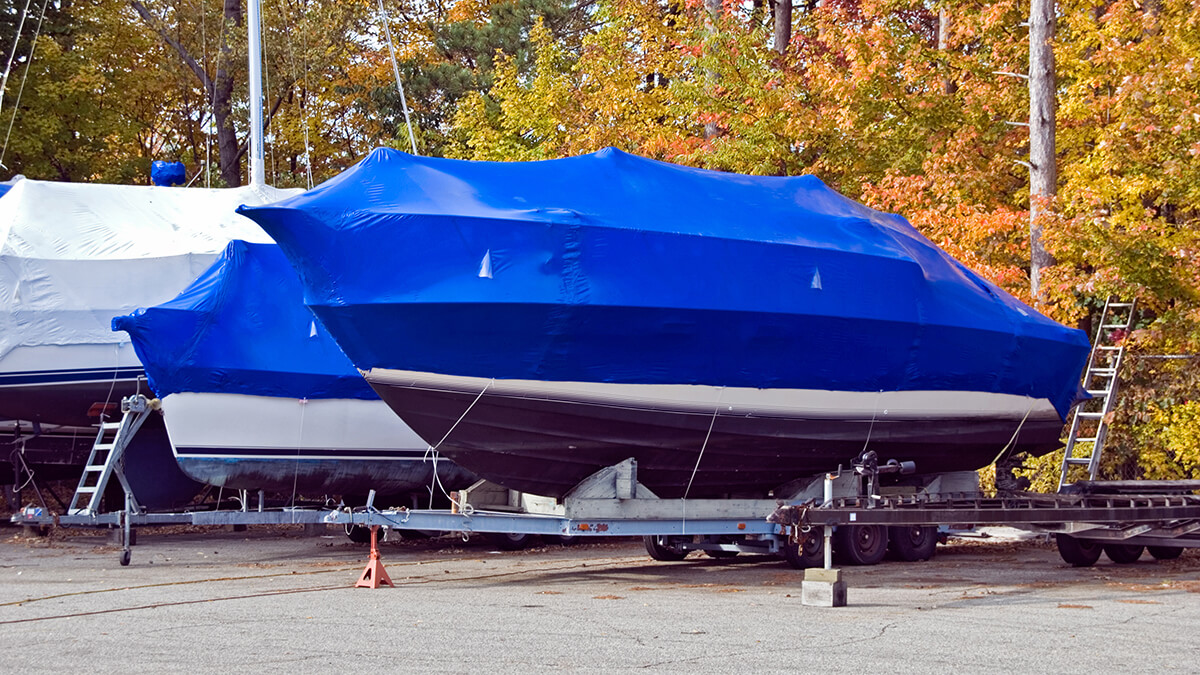
Splish, splash… snow? Tips for winterizing your boat.

The sun in the sky, the surf splashing in your face, the smell of a fresh summer breeze. It’s not too early to start thinking about next boating season and the most important part of your boating lifestyle, winterization. Foremost Insurance Group knows that winterizing your boat properly this year ensures you to have fun in the sun next year.
“Winterization doesn’t take too long for most boats and is just a matter of when and where,” says senior marine product manager Brad Seeley. “If you are unfamiliar with the process, any marine facility or dealer should be able to help you, but following the right steps makes it an easy do-it-yourself job.”
Winterization doesn’t take too long for most boats and is just a matter of when and where.
How to Winterize Your Boat
*The biggest step in boat winterization is to make sure ALL water is drained from the vessel. Damage due to a freeze generally is not covered by your insurance policy, so if you don’t know how to extract all the water properly get help from a professional to winterize your vessel.
*Drain all the fuel from within the engine. Run the engine to get it out of the system making sure that cooling water is circulating through the engine. Once it’s out of the system, fill up the fuel tanks so it doesn’t develop condensation. Add a fuel preservative to the tank to keep the fuel from vaporizing and protect it from being exposed to the air.
* To minimize the effects of rust and corrosion, spray a petroleum-based or wax-based spray into the engine. Spray the cylinders and any of the metals that need to be protected.
* Remove the drain plug if the vessel is being stored ashore for storage. Sitting water in the boat not only has the potential to freeze and cause damage, but the weight of the water could be enough to pop the tires on a trailer and sink it into the ground or damage trailer axles. Remember to unplug the drain to allow any water that gets in…to get out. Just remember to plug it back in before you launch your boat back in the water. It’s also a good idea to regularly check the drain plug during the storage period to ensure it’s not obstructed.
* Take down any sunshades, canvases or appendages that could be caught by the wind.
* Use a good tarp that’s waterproof, covers the entire open area of the boat and can hold the weight of snow build-up.
* If you are storing your boat on a trailer, remove the wheels and block the hubs so they sit off the ground. Cover the hubs with plastic so moisture is kept out. Park your trailer on level ground and out from under trees or limbs. Store the vessel at a slight angle, with the bow of your boat raised slightly. This will allow for proper drainage. While it’s stored be sure to check it from time to time to make sure it hasn’t tilted or shifted.
* During a freeze, fresh water that has not been flushed out of a boat can cause major damage. Even more, if you didn’t take the time to winterize your boat, those damages may not be covered under your boat insurance policy. That’s why it’s so important to take some time to winterize your boat. An hour of prevention could save you thousands of dollars and one big headache.
